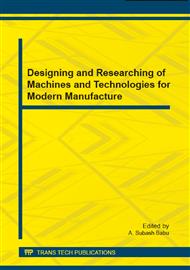p.447
p.451
p.456
p.460
p.465
p.469
p.473
p.480
p.485
The Application and Research of Terrestrial 3D Laser Scanning Technology in Tunnel Survey
Abstract:
This paper examines the basic flow and processing of the terrestrial 3D Laser scanning technology in the tunnel survey. The use of the method is discussed, point cloud data which have been registered, cropped can be constructed to a complete tunnel surface model. An example is given to extract the tunnel section and calculate the excavation of the tunnel. Result of the experimental application of this analysis procedure is given to illustrate the proposed technique can be flexibly used according to the need based on its 3D model. The feasibility and advantages of terrestrial 3D laser scanning technology in tunnel survey is also considered.
Info:
Periodical:
Pages:
465-468
Citation:
Online since:
December 2014
Authors:
Price:
Сopyright:
© 2015 Trans Tech Publications Ltd. All Rights Reserved
Share:
Citation:


